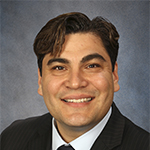Americans are working hard to save money and plan for the future. While there is some value to socking cash away under the mattress or burying gold in the backyard, Americans have access to sophisticated savings tools that offer numerous advantages in saving for specific goals.
Here are few savings structures that can help individuals save for retirement, healthcare expenses, and education costs.
Retirement Savings – Traditional or Roth IRAs
A qualified retirement structure, such as a traditional Individual Retirement Account (IRA) or Roth IRA, offers a sophisticated option for effective retirement savings. This general structure has various protections, restrictions, and guarantees under federal law that allow for long-term savings and growth, all from a tax-preferred position. Individuals saving for retirement must generally choose the traditional and Roth structure when creating a qualified retirement plan. With a traditional IRA, an individual generally claims an immediate tax deduction for contributions, the assets grow tax-deferred, and the individual pays taxes when he or she takes distributions in retirement. With a Roth structure, an individual may not claim a present tax deduction for contributions, but assets grow tax free, and the individual takes tax-free distributions in retirement.
The choice between these two tools is simple. If the individual expects to be in a higher tax bracket while working (which is typically the case), then the traditional structure is favorable. With the traditional structure, the individual can take a tax deduction while his or her taxes are relatively high and then take taxable distributions when his or her tax rates are relatively low. On the other hand, if the individual expects to be in a higher tax bracket in retirement (which is rather less common), then the Roth structure is favorable. With the Roth structure, an individual pays the present lower tax on earnings and then takes tax-free distributions when retired and taxes are higher. Individuals often hedge their bets by setting up both accounts at the same time.
Find out more about retirement planning.
Healthcare Savings – Healthcare Savings Account
A Health Savings Account (HSA) is a valuable tool for paying for a family’s health insurance deductibles, co-pays, and other medical expenses that are not paid by insurance. An HSA is a special account that must be coupled with a high-deductible health plan. The owner of the HSA may make tax deductible contributions into the account and assets in the account grow tax free. Funds in the HSA can grow year-to-year and are not required to be taken out by any specific deadline. An account owner may take tax-free distributions from an HSA to pay for personal and family medical expenses.
The medical expenses can be paid directly from the HSA or the owner can be reimbursed from the HSA. An account owner may also take funds from the HSA for non-healthcare purposes, but such distributions will be taxable and will have a penalty until the owner is sixty-five years old. Most HSA owners pay for immediate medical costs directly from the HSA, often using the debit cards that accompany most accounts. But since HSAs do not have a deadline for taking distributions for medical costs, it is also possible to pay medical costs out of pocket, allow the HSA to grow tax-free, and then use HSA funds to supplement retirement savings.
Education Savings – 529 Savings Plan
A 529 Savings Plan offers a secure, tax-preferred account to save for education expenses with great flexibility. Once an individual establishes a 529 Savings Plan with a financial institution, he or she can contribute funds to the account and invite family and friends to contribute funds as well. Contributions to a 529 plan are not tax deductible from federal income tax, but many states do offer a state-level tax deduction. Assets inside the account grow tax free and withdrawals from a 529 Savings Plan can used for qualified expenses—such as tuition, fees, room, and board—for both college and K-12 expenses tax free. Withdrawals for non-qualified expenses are allowed, but will come with a tax and a penalty.
To find out more about saving for your future, read Saving for Retirement and a Child’s Education at the Same Time.
If you are interested in saving for any of these goals or any other goal, please reach out to a First Bank Financial Advisor today for professional insights, guidance, and advice.
|


